OP-ED
South Africa’s missing children (Part Four): The search for solutions
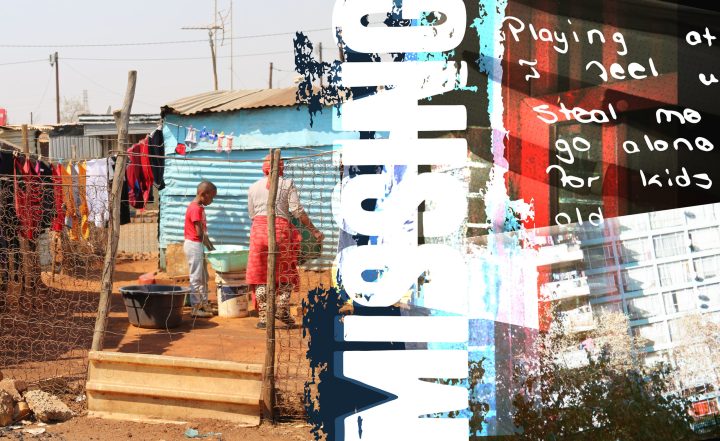
When narratives about missing and trafficked children are used to serve a political agenda, children become incidental. To solve the problem requires a radical change in approach, where children and their needs become the focus of our policies. But to achieve this goal, we need to first listen to them and understand what makes them unsafe, and what can be done to protect them.
Read Part One, Part Two and Part Three.
Recognising what makes children vulnerable to going missing or being trafficked is key to addressing it. In this four-part series, experts have uncovered some important contributing factors including poverty, violence, neglect, unsafe environments, dysfunctional families, institutional care, harmful cultural practices, undocumented status, inadequate policing and government policy.
These are defining features of childhood in South Africa.
The Children’s Institute’s Children Count states that 59% of children (12 million) live below the poverty line. Twenty percent of children (almost four million) live with neither parent, and 8.5 million live with their mothers, but not their fathers.
Some 26% of adolescents have reported one or another form of sexual abuse.
As part of her Courage Child Protection programme, anthropologist and child protection activist Dr Dee Blackie reported that in 45% of abuse cases, the abuse occurred at home. Just over 12% of children are being neglected at home, and 45% of children living in institutional care have been neglected or abandoned.
Blackie’s research identifies other at-risk children, including 91,000 girls between 12 and 17 who are married, divorced, separated, widowed or living with a partner as husband and wife.
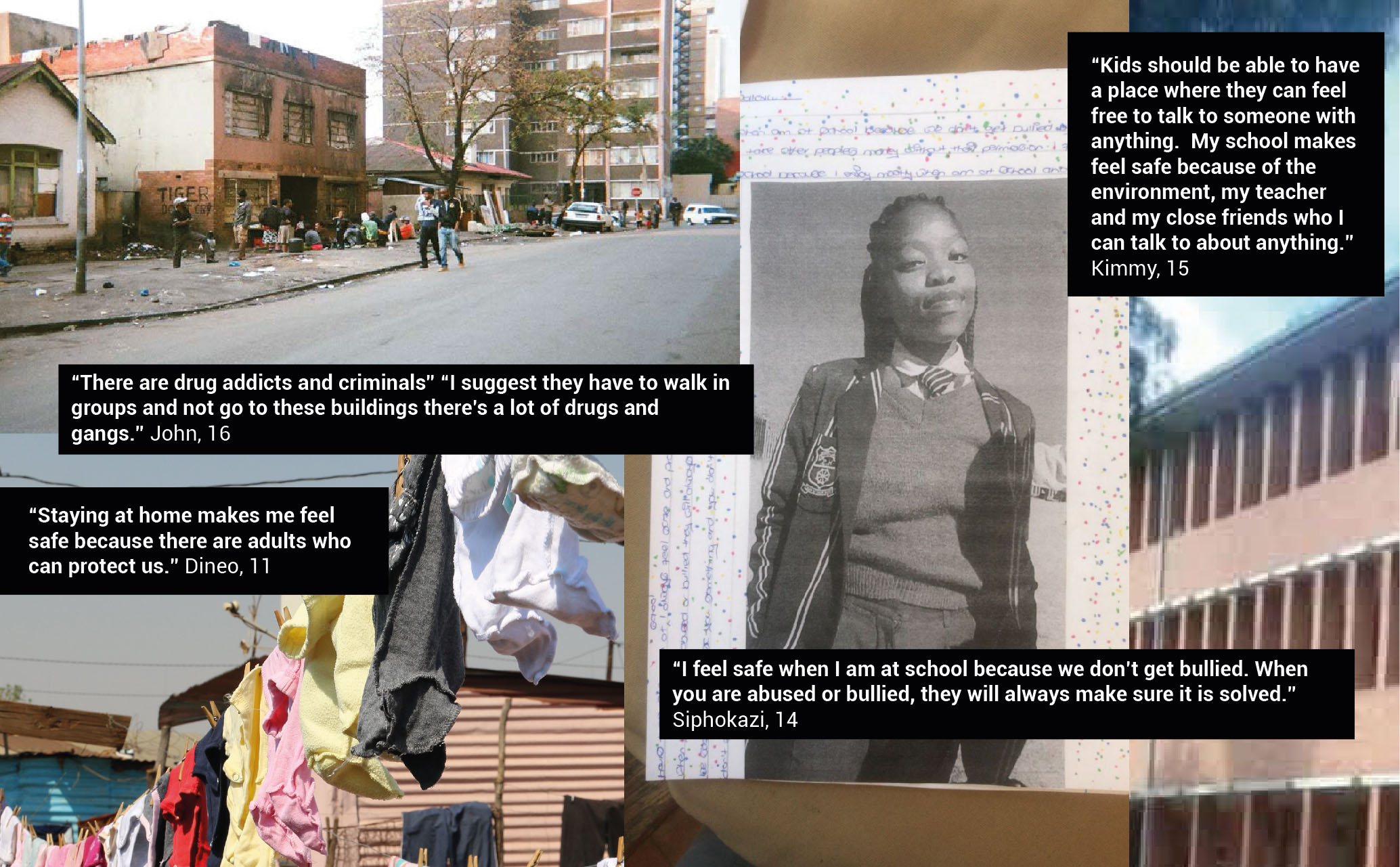
In addition, she says that 45% of South Africans use traditional medicine, most of which is unregulated, and that mutilations and removal of body parts for the purpose of traditional medicine are not uncommon.
Two reports completed by the Human Rights League in Mozambique and Childline in South Africa confirm that children are most likely to be targeted because they are more vulnerable and because their body parts are thought to hold more power and luck in them.
There is no separate category in crime statistics for muti murders, but although most go unreported, in 2003 a specialist police unit said there were between 150 and 300 muti murders each year.
Moreover, there are 55,000 children living in child-headed households (58% of whom are younger than 15) and 642,000 displaced or migrant children in South Africa.
The Department of Home Affairs was unable to provide the number of undocumented children for this article. But, in 2019, the Department of Basic Education admitted that there were 1,190,434 undocumented learners in the school system, 830,698 of whom were South Africans and 167,734 from other countries. Blackie speculates that when adding kids under five and school drop-outs, this number could be as high as two million children.
These statistics mirror the lived experience of South African children.
Dumisa* watched while a shack fire killed his two older siblings. His mother, an alcoholic, had died of Aids and his father abandoned the family. At the age of seven, he became the head of the household, raising his two younger siblings, aged three and six months, by scavenging on a rubbish dump until an adult smashed a plate over his toddler brother’s head, prompting the police to finally remove the children and place them into care.
Separated from his younger siblings, it was two years before they were reunited in a place of safety where he was finally loved and cared for.
It was too late for the little boy though. Diagnosed with oppositional defiance disorder, and desperate for attention from his new house dad, Dumisa became a serial runaway. For the three years that he lived in the home, his house parents patiently found him and brought him back.
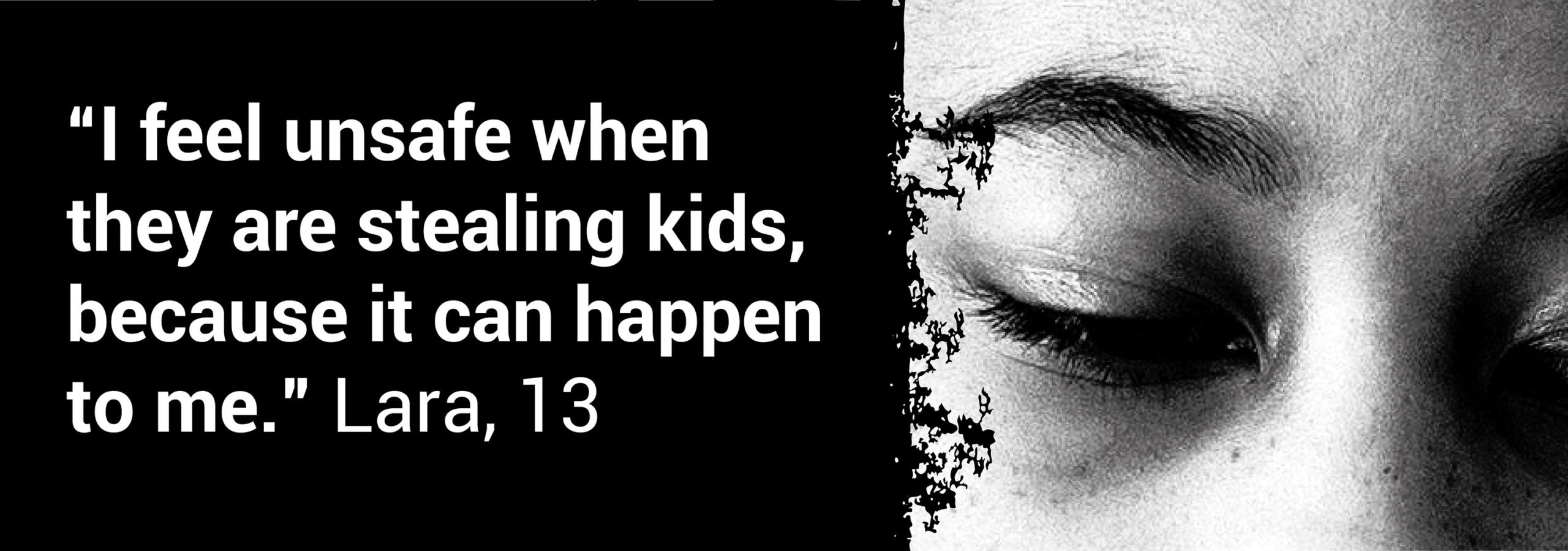
But then his siblings were adopted by a family living overseas and his social worker, deciding that he was unadoptable, chose to move Dumisa to a formal residential institution with high walls so “he can’t run away”.
Brutalised by poverty, violence, the pressure of running a child-headed household and institutional care, Dumisa typifies a child vulnerable to going missing or being trafficked. If he runs away now, it’s doubtful anyone will look for him.
These are problems echoed by children from across the Eastern and Western Cape and Gauteng. In interviews conducted for this series by social workers from welfare organisation ACVV, local community leaders and NGOs, children explained what makes them feel safe and unsafe. In addition, teenagers attending the Fight with Insight weekend programme participated in a “photo-voice” project, taking photos and creating posters to highlight the dangers they face, and how these can be solved.
Some important themes emerged from the interviews.
For most children, their safest place was at home with parents: “It’s where I am loved,” said Keanan (15).
But there were notable exceptions. Candice* (12) said she feels unsafe when her “mommy and daddy fight. They drink a lot of alcohol”. Sandy* (9) is also fearful of her parents when they drink. “I’m scared my siblings and I will get hurt,” she said.
Kevin* (11), whose mother is always drunk, doesn’t go to school anymore. Nor does Adam* (12), who was forced to sleep under a tree with his mom because his aunt and sister chased them out of the house when they were high. Tara* (13) is terrified of her uncle because he is a drug dealer.
At 17, Dillon* said he feels unsafe because both of his parents died and now he “lives in a child-headed household”. Sihle* (12) is afraid of being taken for muti because of her albinism.
For others, home was a haven but not a safe place: Kgomotso* (9) said “I feel unsafe when I am on the streets at night because there is a tavern outside the house”. Ayanda* (12) said: “I am scared of killers. I live in a high flat… I looked down, I saw them. They were killing a man with a knife. They stabbed him three times; they even took his clothes. I just cried.”
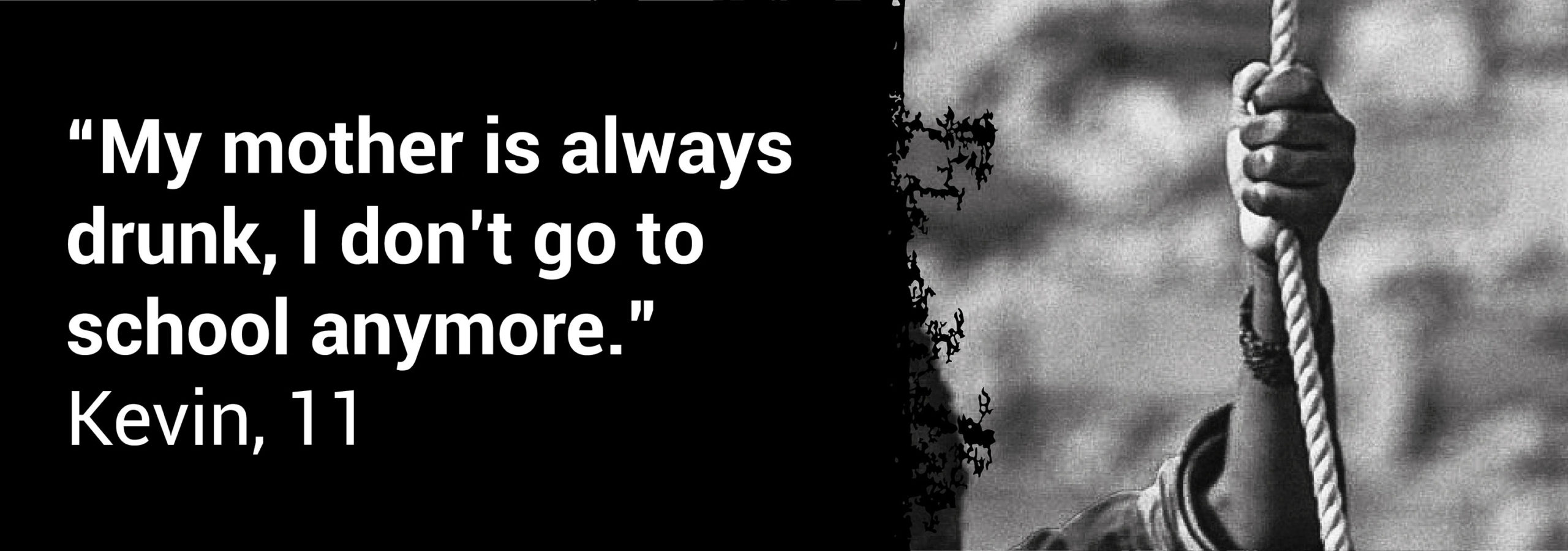
Most children identified “the street” – or areas notorious for crime, drug deals and violence including rape and murder – as the place that make them most afraid. Disturbingly, children were also afraid of the places where they went to play.
Like many other inner-city children, Siphokhazi* (14) identified a local park as the place she feels most unsafe. She said there were people at the park who “kidnap kids while they are playing, and sell their private parts to people who use them for traditional medicine. Some kidnap kids and rape them. They throw them away or kill them after raping them because they don’t want to rot in jail”.
In response to the danger on the streets, 17-year-old Kylie* said, “I feel safe online.” Sam*, herself a victim of a child kidnapping and now a mom, says that her children also gravitate towards an online world. She acknowledged that her fear of something bad happening makes her controlling of their physical world. “Online is the only place where they are free,” she said.
But others are fearful of the dangers this also brings, and emphasise the importance of parents restricting the use of social media.
Sara* (9) described the instinctive feeling that something was wrong when she was targeted online by someone asking inappropriate questions, including her age, name, where she lived and if she wanted a boyfriend. Following her gut and her parent’s advice not to give out personal information online, she didn’t respond, and her older brother barred the player and turned on safe chat. But she was convinced that he kept coming back.
Not all children know how to protect themselves online. A 2006 report on internet usage showed that 22% of learners had given out their personal information to strangers online, and 10%, a friend’s information.
It reflects a larger problem – many children surveyed had not received any guidance about staying safe.
Others reported that advice from teachers and parents mostly focused on “stranger danger”. And while children are fearful of strangers, they recognise community danger too, and provide very practical, often experience-based advice to peers to manage it, including using a buddy system to keep their friends safe, walking in groups, and avoiding being on the streets at night. Staying close to home was their most frequent recommendation.
Equally practical were their suggestions about dealing with unsafe environments, including the need for government to fix broken infrastructure in schools, public toilets, playgrounds and parks to create safe spaces for children, along with better policing. To combat children being left alone and to keep them off the streets, they advocated for more afterschool and weekend programmes, education about what to do to stay safe, and parental protection.
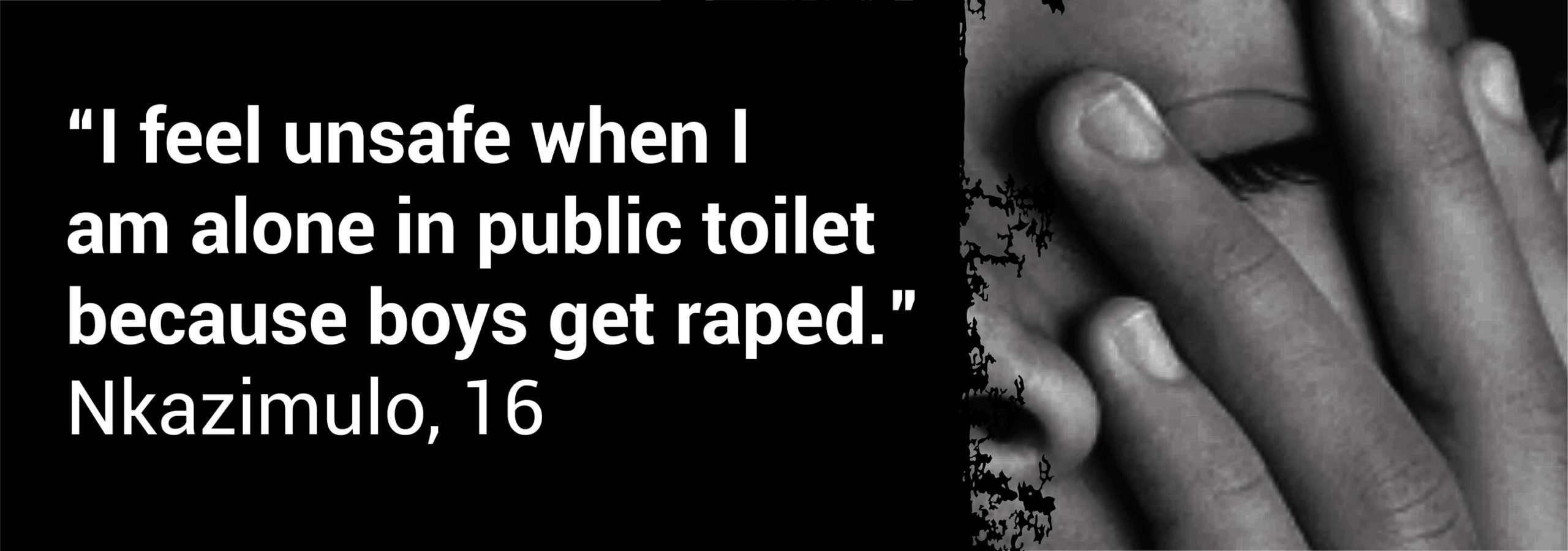
During Blackie’s Courage workshops, she observed that “children often lament the lack of adult supervision in their lives. They are regularly left on their own or in the care of strangers, where they are uncomfortable and at risk. Some have had incidents after being left with strangers simply because they happened to live in the same block of flats, or next door in a township”.
Blackie speculates that ubuntu, the notion that the children belong to everyone in a community, may be a factor. But, she says, it doesn’t apply in all communities.
A youngster had asked her to “talk to parents about who they leave their children with. They think because they grew up with ubuntu that this is still the case. But it isn’t, and we children are the ones paying the price”.
Families and communities play important roles in keeping children safe. Since dysfunctional families are a huge factor in trafficking, it’s critical for parents to provide the safe spaces their children need, and get help with domestic violence and drug and alcohol addictions. Many children just wanted their parents to stay home more.
Parents should also keep their children informed about trafficking and provide them with tips about staying safe physically and online.
While no family wants to prepare for their child to go missing, experts suggest that families develop safety kits so that if children do go missing, they are easier to find.
Critical community roles include providing accessible education, storytelling and support programmes, and addressing harmful cultural practices such as ukuthwala, and the use of body parts for traditional medicine.
It is frequently the community itself that finds missing children, but they also sometimes resort to vigilantism, and stories about community members setting houses alight and assaulting perpetrators abound.
Beyond family and community, many of the factors that make children vulnerable require government intervention. Vigilantism is often a violent response to systemic failures in government policies. This is in sharp contrast to the enabling legislative framework around missing and trafficked children that the government has built, on paper at least.
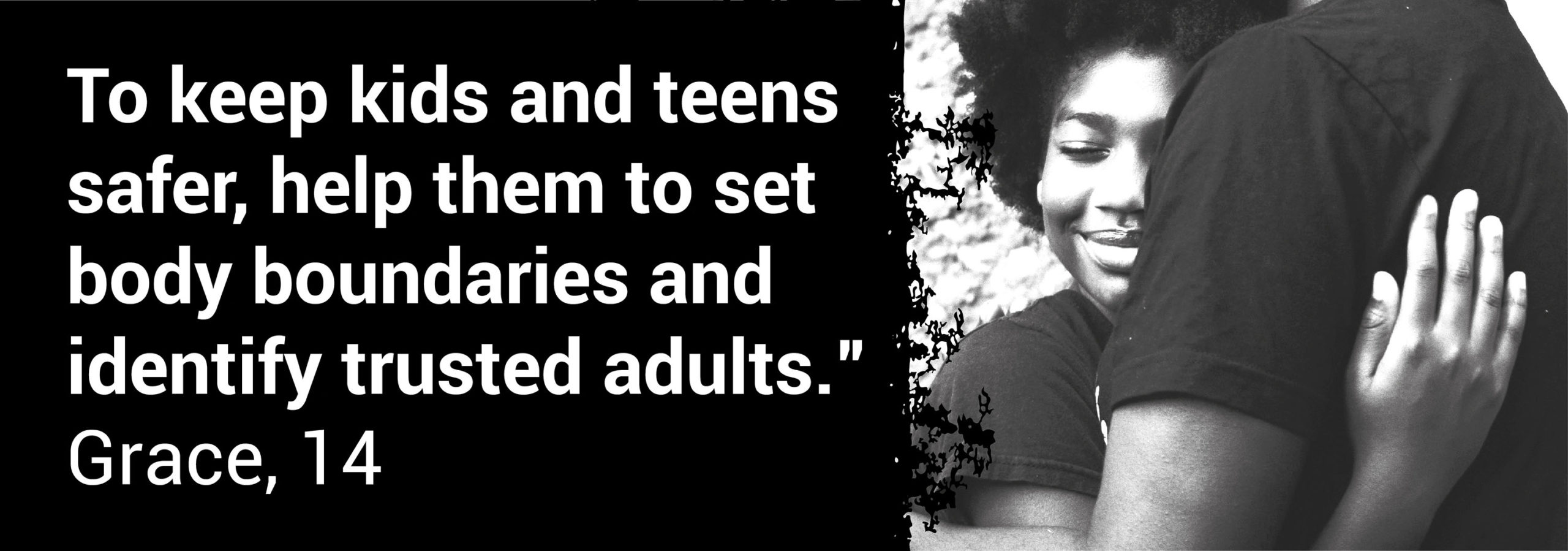
South Africa ratified the Palermo Protocol in 2000 to combat trafficking, and the United Nations Convention on the Rights of the Child (UNCRC) in 1995, committing it to protect children from all forms of sexual exploitation and abuse, and take all possible measures to ensure children are not abducted, sold or trafficked (Articles 34 and 35).
This is confirmed in the African Charter on the Rights and Welfare of the Child, ratified in 1997, which also includes a commitment to prevent child prostitution and child begging (Article 29).
South Africa is a signatory to the ILO convention 182: Worst forms of child labour, which obligates the country to eliminate the worst forms of child labour including slavery, trafficking, debt bondage and other forms of exploitation.
It has also endorsed the UN Development Goals, including goal 16.9, which requires it to “provide legal identity for all, including birth registration, by 2030”, a key factor in preventing statelessness and child exploitation, and ratified the optional 2003 UN protocol on the sale of children, child prostitution and child pornography.
The Constitution affords children the right to a name and nationality from birth, and to be protected from abuse and exploitative labour practices (chapter 28). The Children’s Act 2005, Sexual Offences Act 2007, Child Justice Act 2008 and the Trafficking in Persons Act of 2013 legislate against illegal adoption, forced marriages, child labour, debt bondage and removal of body parts, and criminalise trafficking and exploitation, prescribing penalties of up to R100-million, life imprisonment or both.
South Africa was also a participant in the 2008 Istanbul summit on organ trafficking which, along with the Human Tissue Act of 1983, provides deterrents for trafficking in human body parts.
Yet, its policies and practices preventing children going missing or being exploited are inadequate.
Patricia Martin, from the South African National Child Rights Coalition, describes this lack of programmes as a “systematic implementation breakdown”.
In response to South Africa’s report on the sale of children protocol, the UNCRC highlighted a commonly voiced problem. It indicated that the country’s reporting is weakened by a lack of reliable data, including on “the sale of children, child prostitution, child pornography, child trafficking and adoption”. It also raised concerns about the lack of data on “children who are at high risk of exposure to such offences”, including “victims of domestic violence, children in street situations, migrant, refugee and asylum-seeking children, children living in institutions and children adopted through informal customary adoption”.
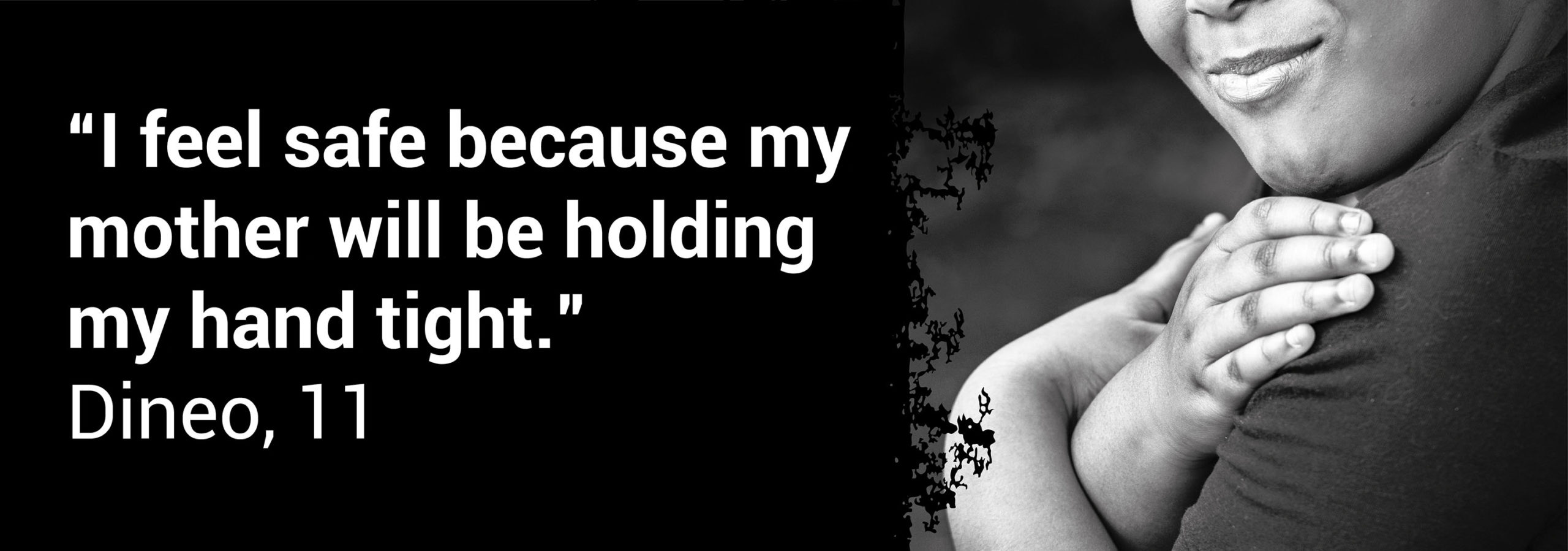
To engage with government on the extent of the country’s child exploitation problem and what can be done to prevent it, written questions were submitted by IFP parliamentarian and member of the home affairs and social development portfolio committees, Liezl van der Merwe.
To date, responses on child labour, undocumented children, biometrics and trafficking through adoption have been received. All written questions will be answered in a prescribed time frame and updates shared.
The following were identified as key contributors to the missing children challenge.
Policing is critical to combat trafficking and find missing children. But this series reveals that SA Police Service (SAPS) personnel range from the dedicated and skilled head of the FCS unit in Protea South, to corrupt officers who accept kickbacks and bribes to “falsify trafficking victims’ travel documents, not report trafficking in brothels” and “not prosecute pimps who facilitate trafficking”.
Others do not pursue child and organ traffickers for fear of reprisal.
Protocols for dealing with missing children have undoubtedly improved. When a missing child is reported, details are sent to the missing person’s bureau. If the child is in danger, an amber alert is issued, and Facebook sends a push message to those within a 160km radius of where the child went missing.
However, these protocols appear to be applied inconsistently and, if the problem with unreported cases is to be addressed, the SAPS needs to be more approachable.
In addition, many officers are hampered by insufficient resources and a lack of training.
Lack of resources is also at the heart of the country’s DNA backlog crisis. Bianca van Aswegan from Missing Children SA says that many of her cold cases involving deceased or kidnapped children have been stalled for years while waiting for DNA results.
Another concern is the disconnect between the morgues and policing. In May 2021, the Gauteng Department of Health disclosed that there were 1,173 unidentified bodies in its morgues. To combat the problem, the department is developing an internet identification system meant to record, track and report demographic data of the deceased person.
However, it’s taken the department 10 years to develop the system and it’s yet to be launched. Van Aswegan believes that some of these unidentified bodies may be missing persons, but no one knows.
Also delayed is the introduction of the Department of Home Affairs (DHA) biometrics system designed to assist with personal identification and combat the lack of identifying information hampering efforts to find missing children, especially in poorer communities.
The automated biometric identification system will replace the current system with at least five biometrics. For children, the DHA is considering foot/palm print, iris, DNA and fingerprint biometrics.
But the policy will only be submitted to Cabinet for approval in March 2022 and thereafter translated into a new Identification Act. It could be years before it’s implemented.
While the biometrics system is promising, the DHA could not answer a question about the number of undocumented minors in the country, or how it plans to address the problem. Equally, the department has yet to respond to questions about the country’s porous borders and the ease with which people and body parts are trafficked between South Africa and neighbouring countries.
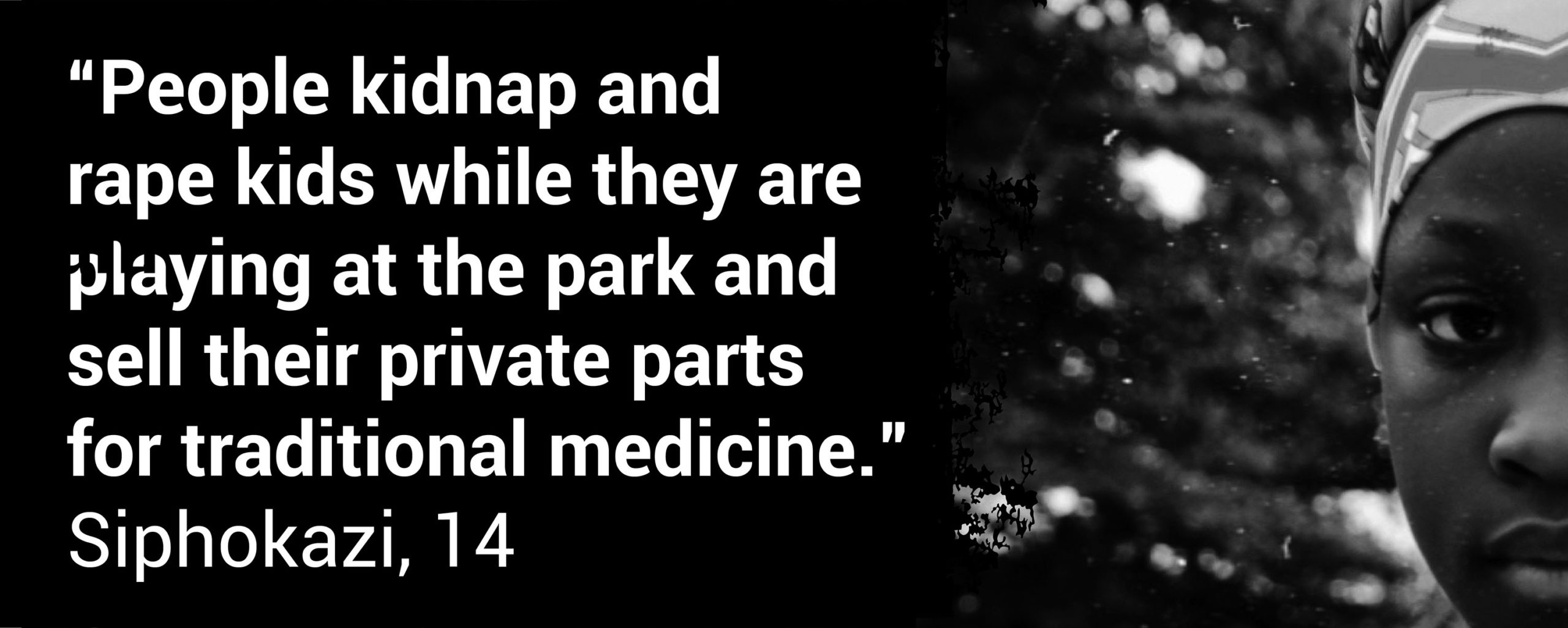
Nor is there any reported plan to curb or actively police the trafficking in human organs which fuels child kidnappings. So, while as far back as 1995 government sought to combat muti killings by investigating witchcraft-related violence and running education campaigns, Parliament has yet to enact legislation regulating traditional healers.
In its written response, the Department of Social Development acknowledged that despite the purported link, it “was not aware of any South African children trafficked through adoption”.
Strategies are also needed to combat child marriage, “the worst forms of labour”, illegal adoption and child abandonment.
Baby Savers SA says urgent legislation is required to save the lives of babies from unsafe abandonment, and regulate safe relinquishment to prevent children falling prey to predators of child trafficking.
Notwithstanding the conventions and treaty commitments to eliminate trafficking and sexual exploitation, the government is reported to have decreased efforts to prevent trafficking in the past year.
Yet, despite these failures in policy and practice, there are occasional glimmers of hope.
Bongiwe’s son Luyanda* was stolen in 2011 when he was just six days old. A woman posing as a government official gave Bongiwe R11 to buy cake at a local supermarket, and then left with her child. She searched frantically, but no one had seen Luyanda or his kidnapper.
Bongiwe says that police did their best to find her child after he was reported missing. The family also spent R20,000 on a private detective, but the trail of the woman who snatched Luyanda had gone cold. Then, nine years later, Bongiwe was contacted by a local woman who thought she knew who had taken Luyanda. The informant claimed she had seen the child, and that the kidnapper had often come to KZN and even asked about the boy’s family.
She also told Bongiwe that the kidnapper hadn’t been pregnant, but claimed the child was hers. After a lengthy investigation, police found the boy in Daveyton and the kidnapper confessed to her crime.
Even then, Bongiwe had to wait until DNA tests were done before she could be reunited with her son. The backlog in DNA cases meant long delays, so the family had to do the tests privately.
Bongiwe explained that no one knows why the kidnapper, who was prosecuted, took Luyanda. However, police say that she may have planned to traffic him, but then changed her mind and raised him as her own child.
SABC reporter, Jayed Paulse, who interviewed Luyanda, said “he is a bit confused about what happened to him”, but he’s happy to be home and enjoys playing with his cousins. The family is getting counselling and a social worker monitors his progress. Although they are concerned about his schooling after he repeated Grade 1, they are committed to helping him catch up and achieve his full potential.
While the scars of her child’s kidnapping remain, Bongiwe is elated to have Luyanda home. She says that she prayed for his safe return and never gave up looking for him. Now she can sleep peacefully. Luyanda’s grandmother says she can also now close her eyes knowing he has returned, and her daughter won’t cry herself to sleep anymore.
Stories like that of Luyanda provide hope for Akani’s and Siphesihle’s families, and those of other missing children desperate to find them.
But, given that “the crucial point of trafficking is the abuse of power to exploit another human being, which thrives in conditions of poverty, economic and gender inequality, corruption and instability”, it will take systemic changes, political will and listening to our children to prevent more going missing.
While advocating for countrywide change, children believe that it’s families who provide them with the safest spaces: “Nothing makes me feel unsafe because my dad is there,” said five-year-old Anjabella.
“To make kids safe, they should go places with an adult, because they can’t steal or kidnap them while they are holding their parent’s hand,” said Dineo (11). “I feel safe because my mother will be holding my hand tight.” DM
These articles focus on missing children, on survivors and those not found or found deceased. While the names of vulnerable children, survivors and their parents have been changed to protect their identities, the names of children still missing are included, along with photos and missing person’s posters in the hope that someone knows where they are. If you have any information, please contact Bianca van Aswegan from Missing Children SA on 072 647 7464 or contact Crime Stop on 086 000 10111.
This story was published with the support of Media Monitoring Africa and UNICEF as part of the Isu Elihle Awards Initiative.
Design by Kerry Nash


















 Become an Insider
Become an Insider
Comments - Please login in order to comment.